Course Design By
Nasscom & Wipro
Home /Data Science & AI/ Data Science Course in Canada
Join our Data Science Course in Canada to master fundamental concepts and become an expert!
In collaboration with

100 Hrs.
Duration
Online/Offline
Format
LMS
Life Time Access
we train you to get hired.

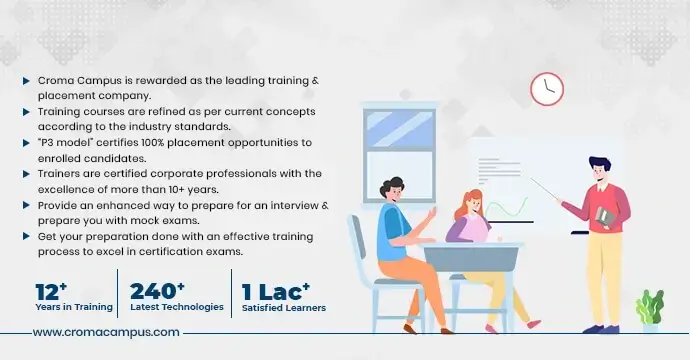
Industry-Relevant Curriculum Learn the latest technologies and tools used by top companies.
100% Hands-On Learning Work on real-world datasets and live projects.
Placement Assistance Resume building, mock interviews, and job referrals.
Flexible Learning Options Choose from live online classes or recorded sessions.
Certifications Included Earn globally recognized certificates from top tech companies.
Internship & Networking Gain real-world experience with industry mentors.
Learn Python, R, and SQL to manipulate and analyze data
Master data visualization with Tableau, Power BI, and Matplotlib
Understand machine learning and deep learning using TensorFlow and Scikit-Learn
Work on cloud computing platforms like AWS, Google Cloud, and Azure
Use Big Data tools like Hadoop and Spark for large-scale data processing
Develop predictive models for real-world business applications
Prepare for global certifications in data science and AI
Analyze customer data and identify factors causing customer churn
Build a machine learning model to predict which customers are likely to leave
Develop retention strategies based on data insights
Use regression models to predict property prices
Understand how factors like location, size, and demand affect pricing
Implement feature engineering for better model accuracy
Analyze customer reviews and social media comments.
Use NLP (Natural Language Processing) to classify sentiments (positive, negative, neutral).
Build a dashboard to track brand reputation over time.
Build a fraud detection model using machine learning
Analyze transaction patterns to identify fraudulent activities
Deploy the model using cloud platforms
Develop a recommendation engine like Amazon & Netflix
Use collaborative filtering and deep learning models
Improve customer engagement by providing personalized recommendations
Programming Languages Python, R, SQL for data manipulation and analysis
Data Visualization Tableau, Power BI, Matplotlib for creating insightful visuals
Machine Learning TensorFlow, Scikit-Learn for building predictive models
Cloud Computing AWS, Google Cloud, Azure for scalable data solutions
Big Data Processing Hadoop, Spark for handling large datasets
Data Analyst 40-55 LPA
Machine Learning Engineer 50-75 LPA
Data Scientist 60-85 LPA
AI Engineer 70-90 LPA
Entry-level Data Analyst / Business Analyst
Mid-level Data Scientist / Machine Learning Engineer
Senior-level AI Engineer / Data Architect
Leadership roles Chief Data Officer / AI Strategist
Google Data Analytics Certification
IBM Data Science Professional Certificate
AWS Certified Data Analytics
Microsoft Azure Data Scientist Associate
we train you to get hired.

By registering here, I agree to Croma Campus Terms & Conditions and Privacy Policy
NA
NA
NA
NA
NA
NA
NA
NA
+ More Lessons
Course Design By
Nasscom & Wipro
Course Offered By
Croma Campus
Stories
success
inspiration
career upgrade
career upgrade
career upgrade
career upgrade
You will get certificate after
completion of program
You will get certificate after
completion of program
You will get certificate after
completion of program
in Collaboration with
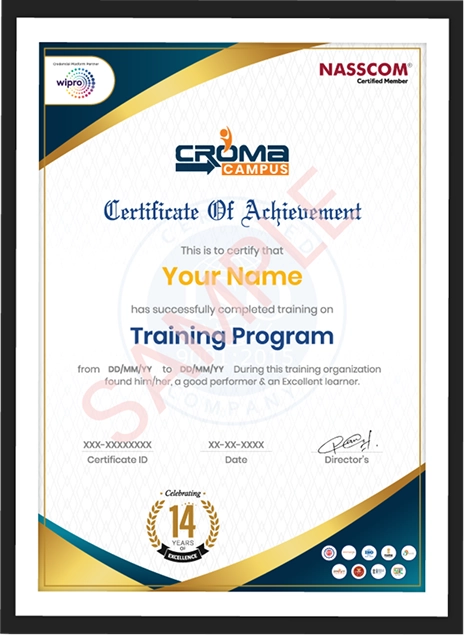
Empowering Learning Through Real Experiences and Innovation
we train you to get hired.
Phone (For Voice Call):
+91-971 152 6942WhatsApp (For Call & Chat):
+919711526942Get a peek through the entire curriculum designed that ensures Placement Guidance
Course Design By
Course Offered By
Ready to streamline Your Process? Submit Your batch request today!

1. In recent times Python learning is hugely in demand. And I was looking for an institution to get myself enrolled in this course to become a Data Scientist. They have the best trainers and an affordable fee structure. It's been months now and I am fully satisfied with the trainers, live sessions, Read more...

Enrolling yourself in the Deep learning certification program of Croma Campus is the best way to master all the concepts of data science and deep learning. My experience with these people has been very amazing and positive. The support/guidance I got from the trainer is highly commendable Thanks, te Read more...

Hello, I have joined Croma Campus for a few months in the course helped in acquiring good knowledge. Also, there are many extra classes held by the trainer. There are many mock sessions given after the post completing the course. The salary offered in the industry is high to the candidates. Read more...

I am Pooja Yadav from Haryana. I have joined Croma Campus for learning this course. The trainer helped me to learn advanced practical knowledge and new innovative skills to enhance my ability. Also, the faculty is available in the odd hours for helping. There are many extra reference study materials Read more...

Hi, my name is Sanjeev Kumar. I have recently completed my Django Framework Certification Training from Croma Campus which is the brand name in the domain of technical education. It provides me with well-updated study material which is concerned with the latest industry trends. After the training co Read more...

Croma Campus has well-experienced faculties who are working as a top professional in the industry. I have recently completed my Artificial Intelligence Certification training from this institute and it gives me remarkable experience. With world-class infrastructural facilities, it has a student-frie Read more...

Hi, my name is Vishal Jha currently I am associated with L&T. I got this amazing opportunity with the help of our specialized trainers. Due to the continuous practice through the mock interview, I get to clear out the Interview of this MNC. Apart from the training provided the behavior of trainers a Read more...

Hi, my name is Ankit. I currently work as a Data Science at HCL. My interview in this company was scheduled by Croma Campus as I have done 2 months of Masters in Data Science course from it. I managed to crack this interview and the whole credit of my success goes to my Data Science trainer who dedi Read more...

I have joined Croma Campus for taking the Masters in Data Science. It is a good place to learn. Helps in gaining the skills & knowledge. Read more...
Basic knowledge of mathematics and programming (Python or R) is helpful, but not mandatory.
The course duration can range from a few months (certifications) to 1-2 years (degree programs).
Yes, most courses include practical projects and real-world data sets to work with.
Many programs offer job placement support, internships, and career counseling to help you land a job.
Requirements typically include a bachelor’s degree and a basic understanding of math or programming.

Highest Salary Offered
Average Salary Hike
Placed in MNC’s
Year’s in Training

fast-tracked into managerial careers.
Get inspired by their progress in the
Career Growth Report.
FOR QUERIES, FEEDBACK OR ASSISTANCE
Best of support with us
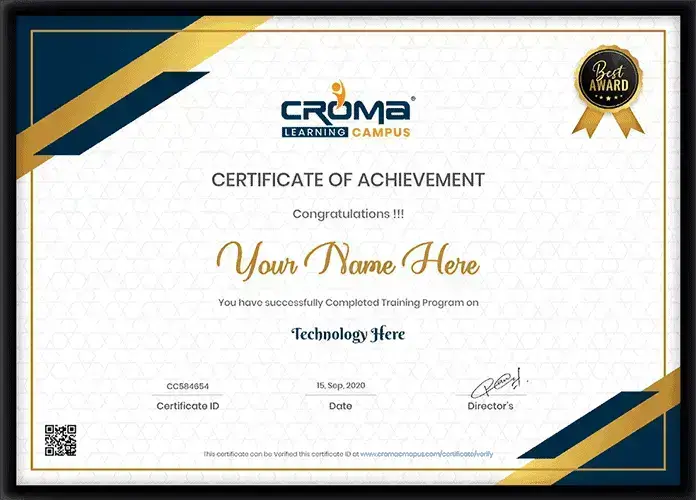




An OTP on your submit Mobile No has been shared.please check and submit OTP
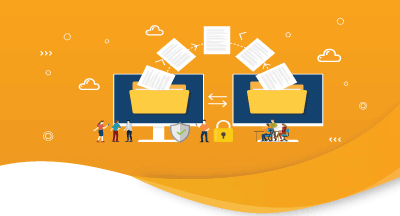
We’re the best training provider with rigorous industry-relevant programs designed and delivered in collaboration with world-class faculty, industry & Infrastructure.
Share some of your details and we will be in touch with you for demo details, and know about Batches Available with us!
By registering here, I agree to Croma Campus Terms & Conditions and Privacy Policy


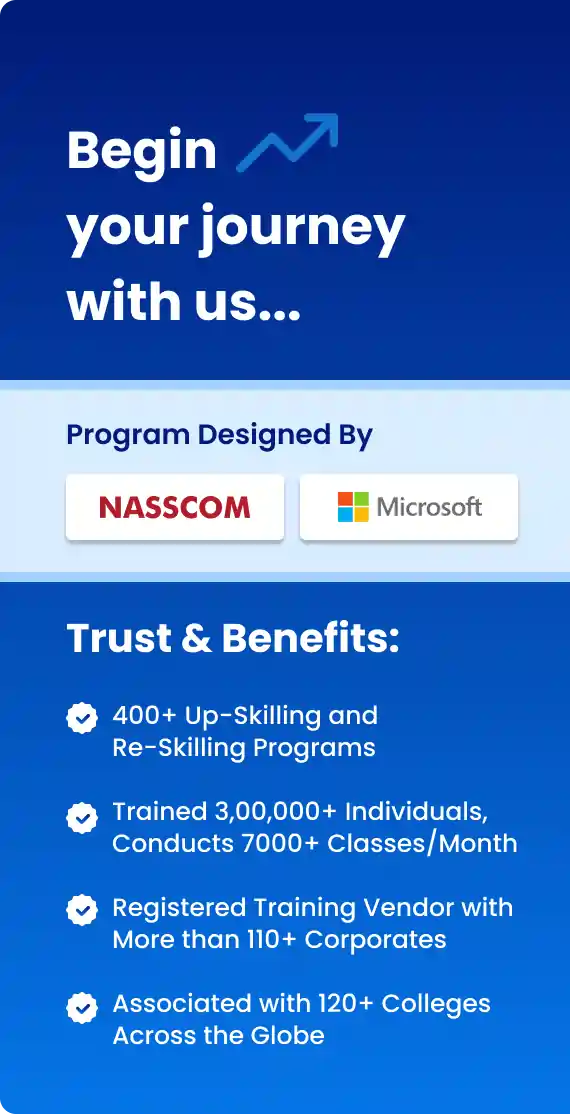
Enter your email and phone number
For Voice Call
+91-971 152 6942For Whatsapp Call & Chat
+91-9711526942Talk to Career Counsellor

Stay ahead in your career with real-time salary updates.
By registering here, I agree to Croma Campus Terms & Conditions and Privacy Policy

We’re the experts in web design and development for the start up next door and the fortune 500.

What Benefit You will get from this Program
By registering here, I agree to Croma Campus1 Terms & Conditions and Privacy Policy
Share some of your details and we will be in touch with you for demo details, and know about Batches Available with us!


